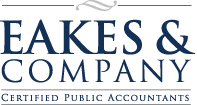THINK LIKE A LENDER BEFORE APPLYING FOR A BUSINESS LOAN
Commercial loans, particularly small business loans, have been in the news over the past year or so. The federal government’s Paycheck Protection Program has been helpful to many companies, though fraught with administrative challenges. As your business pushes forward, you may find yourself in need of cash in the months ahead. If so, more traditional commercial loan options are still out there. B efore you apply, however, think like a lender to be as prepared as possible and know for sure that the loan is a good idea. 4 basic questions At the most basic level, a lender has four questions in mind: How much money do you want? How do you plan to use it? When do you need it? How soon can you repay the loan? Pose these questions to yourself and your leadership team. Be sure you’re crystal clear on the answers. You’ll need to explain your business objectives in detail and provide a history of previous lender financing as well as other capital contributions. Lenders will also look at your company’s track record with creditors. This includes business credit reports and your company’s credit score. Consider the three C’s Lenders want to minimize risk. So, while you’re role-playing as one, consider the three C’s of your company: 1. Character. The strength of the management team — its skills, reputation, training and experience — is a key indicator of whether a business loan will be repaid. Strive to work through natural biases that can arise when reviewing your own performance. What areas of your business could be viewed as weaknesses, and how can you assure a lender that you’re improving them? 2. Capacity. Lenders want to know how you’ll use the loan proceeds to increase cash flow enough to make payments by the maturity date. Work up reasonable cash flow and profitability projections that demonstrate the feasibility of your strategic objectives. Convince yourself before you try to convince the bank! 3. Collateral. These are the assets pledged if you don’t generate enough incremental cash flow to repay the loan. Collateral is a lender’s backup plan in case your financial projections fall short. Examples include real estate, savings, stock, inventory and equipment. As part of your effort to think like a lender, use your financial statements to create a thorough inventory of assets that could end up as collateral. Doing so will help you clearly see what’s at stake with the loan. You may need to put personal assets on the line as well. Gain some insight Applying for a business loan can be a stressful and even frustrating experience. By taking on the lender’s mindset, you’ll be better prepared for the process. What’s more, you could gain insights into how to better develop strategic initiatives. Contact our firm for help. © 2021

